- Home
- Louis L'Amour
Sacketts 00 - The Sackett Companion (v5.0) Page 12
Sacketts 00 - The Sackett Companion (v5.0) Read online
Page 12
TAMPICO ROCCA: Part Spanish, part Apache; a tough, hard-working man who had never known anything but the rough side of things. A top-hand on any man’s outfit, scout for the army, shotgun messenger, cowhand, sheepherder, a good friend, a dangerous enemy, but a man without malice.
You never looked to see where he was because he was always where he was supposed to be right where he could do the most good.
SPANISH MURPHY: Spanish was not a nickname; his mother named him that because it sounded right. He was Black Irish, and none of that nonsense about the Black Irish having Spanish blood. The number of Spaniards who got ashore after their Armada ships were wrecked on the Irish coast was never enough to make a difference. There were Black Irish in Ireland a thousand years before the Armada, maybe two thousand. The Armada story was a quick explanation for those who did not look any further. Some of those who settled Ireland were from Miletus in the eastern Mediterranean, and some of them had stopped in Spain but that was before there was such a thing as the Spanish people we now know. There were Iberians there, and some Phoenicians, but even the Visigoths had not arrived yet, and the Moors, who contributed their blood for seven hundred years, had not yet moved out of Arabia into North Africa en route to Spain.
Spanish Murphy was a good hand in any kind of a fight, a top-hand when he worked but he worked only when he needed the money. He liked women and he liked cards, although he drank sparingly and never smoked at all. Once in a while he lit a cigarette, but when he did you knew he was stalling for time or thinking about something. He was a man with quick hands and a natural skill with a rope, cards, or a gun.
JOHN J. BATTLES: From New England, a young businessman on his way up—until he killed a man over a girl. It had been self-defense, but when the trial was over and he was acquitted, he was no longer welcome in town, nor at his girl’s house. He sold his business and rode west. He had driven stage, ridden with a cattle drive, and had been a deputy marshal in a wild cow town. One brother was a banker, another a teacher, and that was what Battles had really wanted, to teach. It was a case of being shot down by a drunken man or shooting in self-defense. He won the gun battle but lost everything else.
Like many another who came west he found himself liking the rough, hard life and the wild frontier towns. Men like Spanish Murphy, Tampico Rocca, and Tell Sackett were his kind of people, and when his girl wrote to him and wanted to join him he could no longer even remember exactly what she looked like, nor could he imagine himself returning to the easier life in Vermont. He remembered the leaves turning and the crunch of snow underfoot, and sometimes he thought of returning, just to visit.
Yet he found himself liking far horizons and a good horse between his knees. He knew riding into the Sierra Madres was taking a chance, but who lived forever? And if Tell Sackett was going down there, why, he’d just ride along to be sure he got out alive.
PETE KITCHEN: The consummate Arizona pioneer; there are a hundred stories about Pete, most of them true, and all of them might be. He was one of the men who built the state into what it has become.
The Apaches used to raid Pete’s place quite often, but he kept a few expert riflemen behind a parapet on his roof, and after they buried a couple of dozen Apaches, the rest just rode by and saluted him. He had proved himself as a warrior and enough was enough.
He raised melons, fruit, cabbages, potatoes, grain, and such, and his home was a noted stopping place along the trail from Tucson to Nogales. For those unwise enough to attempt stealing his horses or cattle, he maintained his own boot hill graveyard.
He was a man possessed of all the virtues and vices of the frontier, noted for his honesty as well as his courage.
Every state has its pioneers about whom there are stories no fiction writer can surpass, and Pete was one of them.
THE SHOO-FLY RESTAURANT: Operated by Mrs. Wallen, the Shoo-Fly was patronized by everybody who came and went in Tucson around 1869 and for some years after. The menu was limited in scope but answered to healthy appetites and was remembered fondly years after by many a hungry traveler. It was a low-ceilinged room of adobe, and the ceiling was of stretched muslin. It served beef, beans, and chili, fruit occasionally and eggs most of the time. The floor was of hard-packed earth, the tables of pine. The seats were benches or hide-bottomed chairs, the latter usually reserved for the “regulars.” Common talk over the eight or nine tables covered range conditions, Army affairs, the state of the nation, the latest gun battles, or what the Apaches were up to. It was not only a place to eat but a place to pick up information on just what was actually happening in Arizona and along the trails in or out.
WILLIAM S. OURY: Former Texas Ranger, first mayor of Tucson, pioneer rancher. As in the case of Pete Kitchen, books might be written about his life and adventures.
DORSET BINNY: In my story she rode into Mexico to find her sister, and found help in Tell Sackett and his friends, who were on the same sort of mission.
KAHTENNY AND TOCLANI: Both are actual characters, Apache Indians known in their time. Toclani served as a scout with Emmet Crawford, one of the most noted Army officers in the wars against the Apaches.
ARCH AND WOLF HADDEN: Two very tough men on the outlaw side who were considered bad men where they came from. The trouble was, they traveled too far and got into a country where people took nothing for granted. They had to be shown.
HARRY BROOK: A child prisoner of the Apaches; when they grew up on the frontier they learned to survive, and Harry was a survivor.
SIERRA MADRES: The Mother of Mountains. A range that lies along the border of Chihuahua and Sonora. Very rugged country, and the last refuge of the Apaches.
RANCHERIA: The name given to an Apache village, often temporary.
DESERTED RANCHOS: In northern Sonora and Chihuahua there were, at the time, a number of deserted ranches that had formerly been occupied by Mexican ranchers. The Spanish and the Mexicans had been fighting the Apaches long before the Americans came on the scene. A few of the officers leading the fight were very efficient and skillful fighting men who understood such fighting. Unhappily, much the same situation existed in Mexico City as existed in Washington, D.C. The national government simply did not understand conditions on the frontier and often the best efforts of Mexican officers were defeated by rulings made from desks far from the Apache country.
GALLOWAY
First publication: Bantam Books paperback, July 1970
Narrator: Flagan Sackett
Time Period: c. 1875–1879
Flagan and Galloway Sackett were just looking for a place to start ranching. It was a big, wide, lovely country and lovely country and there seemed to be room enough, unless, of course, one was greedy—and the Dunns were. Flagan and Galloway were brothers from Tennessee, descendants through Kin-Ring Sackett from old Barnabas, the first one of the family in America. They were cousins of Tell, Orrin, and Tyrel Sackett.
First off, Flagan was taken by Apaches, and by the time he escaped he was in pretty rough shape. Just surviving left him in even worse condition and unready for any kind of trouble, and Curly Dunn was determined to make the trouble.
WILD COUNTRY: The La Plata River runs down a canyon of the same name, gathering its waters as it travels away from its beginning up in the Cumberland Basin. Here and there other small streams join it, a couple of them making miniature waterfalls as they tumble down the slopes through the pines.
Nowhere are the wild flowers more beautiful, and there’s good grass for grazing. Deer and elk haunt the forests, and there are beaver in the streams again. It’s high up country, over ten thousand feet when you get to the Basin, and the rim of the Basin is up to over eleven thousand. The La Platas were named for the silver found there, and they were named by the Spanish even before Rivera rode north in 1765.
The true limits of exploration by the Spanish and French are unknown, and we must remember that all history of the time is based upon reports, many of them official, made by those who returned safely. As far as the Spanish are concerne
d, I am quite sure that in the years to come reports will be discovered in Spanish archives of travels yet unknown. But we also know that much travel was clandestine, carried out by fur traders or prospectors who did not want to share their discoveries. Any gold they found was theoretically the property of the King, and all travels were supposed to be with permission from the governor or someone in official capacity. Men being what they were, many evaded that permission, knowing it was rarely granted. Hence, many rivers and mountains were named before the official discoverers arrived.
French officials were more lenient than the Spanish, and much exploration was carried out by fur traders or trappers who left few if any records behind. Elsewhere I have mentioned the colony of Frenchmen who left Illinois for the Pacific Northwest several years before Lewis and Clark. The only report of them I have so far seen was that by David Thompson, the Canadian explorer who met some of them in the Northwest in 1797.
Flagan’s survival in this instance was not unusual for the time. Of one thing I am sure: if one is determined to survive, no matter what, a human being is almost impossible to destroy. I have read every story of survival I can find, and many of them surpass belief, but survival is more a matter of the mind and of character than it is of the physique. Certainly health and strength are important, but the sheer will to live is most important. The well-known stories of Hugh Glass and John Coulter are cases in point, but one can list hundreds of others, many of them in our own time.
JOHN COULTER: Also, Colter. (1774–1813) Member of the Lewis & Clark Expedition. On the return, he left them at the Mandan villages and returned to the Rockies with two trappers, where he spent four years, including two dramatic escapes from the Blackfeet Indians. On one of these he was scheduled to run the gauntlet, running between two lines of Blackfeet, each striking him with whatever weapon they wished until he was beaten or cut to death.
Coulter spotted a weak spot in the line and broke through, taking off, stark naked, across the plains. They pursued him for nearly one hundred miles but he escaped, his feet horribly torn. (I drew upon this episode for my escape of Flagan Sackett in GALLOWAY.)
Coulter discovered the geysers of Yellowstone, and they were first named Coulter’s Hell.
He later assisted Meriwether Lewis in making maps of the area.
HUGH GLASS: (died in 1833, birthdate unknown) It was said by one who knew him that Glass had been a pirate with Jean LaFitte, and had lived for a time with Pawnee Indians. He is best known for encountering a female grizzly and her cubs. Although he killed the grizzly he was horribly chewed and clawed. From what they could see he was good as dead, and they were in the heart of Indian country and wanted to get out, so they took up a collection and paid two men to stay behind until he died.
He did not die. Their party was getting further and further away and Indians were all about them. Glass was obviously dying, so when he passed out they left, taking his rifle, knife, and tomahawk with them so the Indians would not get them.
After they had gone, Glass became conscious and, furious that they had not only deserted him but taken his weapons, he crawled down to the stream for a drink, rolled in the mud to stop his wounds from bleeding (some such mud has curative properties), ate some berries, and started out across the plains, crawling.
Driven by a furious hate for those who deserted him, Glass kept going. He was found by some other trappers who took him downstream in their boat. When they camped at night he was in such bad shape they left him near the canoe. During the early morning hours Indians attacked and wiped out the camp, but did not find Glass, who was some distance from the others.
Glass survived and reached Fort Atkinson, where almost the first person he saw as he came through the gate was Fitzgerald, one of those who had deserted him and taken his rifle. Glass had intended to kill him on sight, but changed his mind. He had many further adventures and was finally killed by the Arikara.
One thing it is well to remember: that sea, that desert, that arctic cold can kill just as easily today as a hundred or a thousand years ago. One should always go prepared for the worst, in a mental way always, in a material sense if possible.
NICK SHADOW: He felt it was as good a name as any. His father had left him without a name but with a good education. He put in some time as a school teacher and was a good one, but things happened when a man had a view of things he liked to preserve. He became involved in a corpse and cartridge occasion and moved west where the climate was more favorable for survival.
BULL DUNN: A family man, whose family were renegades, outlaws, and whatever it took to gather another man’s cattle or horses. They had been a traveling family until they found the La Plata country, and there they decided to stay. They had a way of riding roughshod over opposition but this time it did not seem likely there would be any. Flagan and Galloway were just two men, and even Nick Shadow didn’t add up to much, or so they believed. The trouble was that nothing worked out like they planned.
ROCKER DUNN: The best of the Dunns with a gun, a quiet, reasonable young man who had begun to grow up mentally and to see that the country was changing. The old, wild riding days that followed the War Between the States was coming to an end, and he was bright enough to realize that a bullet looking for a home didn’t care where it landed. But the rest of the Dunns didn’t want to listen. He was telling them the only life they could understand was coming to an end.
LOGAN SACKETT: A Clinch Mountain Sackett, descended from Yance and a lot of others, tough men all. He had grown up fighting bears in the rhododendron jungles in Tennessee, places where spruce trees were fifteen feet through and so tall you had to look twice to see to their tops. There’d been times when he’d left the Clinch Mountains and gone on along the ridges to Clingman’s Dome and then down into the deep, deep forest to places where the sun never shone. He trailed the bears right back to their dens in the rhododendrons where they thought they were safe. Then he rode off to fight for the Confederacy in the Civil War, even though most of the Sacketts had gone the other way.
PARMALEE SACKETT: The Flatland Sacketts had money and Parmalee came from Grassy Cove. One of his ancestors had found Grassy Cove back in the middle 1600s and was nearly done in by a mountain lion there. Jubal Sackett had holed up there until his broken leg mended but he left a Sackett sign for those who came later. It was a good place to live, and Jubal had left his cave with regret to push on west.
Parmalee’s ancestors had settled there but they held land elsewhere, too, and they did well with raising stock and breeding horses. Parmalee went west, and for a time he worked as an actor in a traveling show. Here and there he had his share of difficulties. He always enjoyed the cornhuskings, sorghum-making, and bean-stringings back in the high-up hills. He was a handsome man with a good voice for singing and he could play a fiddle more than somewhat when the mood was on him. Back in the mountains at the cornhuskings a man who found a red ear of corn could kiss the girl of his choice, and they do say Parmalee was right handy at finding the red ears—and when he found one the girls all started edging closer. Here and there folks said Parmalee knew where the red ears were before the husking started, but that was mostly jealousy, others thought. Parmalee was a man of the cities as well as the mountains and the plains and might have done well as an actor had he chosen to remain with the company.
SHALAKO: The village of Shalako in this story does not exist, though I had hoped to build it. At the time the story was written only one log house was on the site but others were planned. Plans do not always come to fruition, however, and these plans were dependent upon others than myself. Hence, for the time being, the deer, elk, and beaver are left undisturbed, and the mountain lion who followed me over a saddle in the hills one day is probably still roaming the area.
No doubt that mountain lion had followed hunters and feasted off what they had left behind, or he may simply have been curious, as animals are inclined to be. I never saw him (one sees them but rarely, even when many are about, for they do not wish to be seen)
and would not have realized his presence except that after pausing at the far side of the saddle, looking over the country beyond, I returned to find his tracks over mine. My tracks were plain in the sandy trail left by cattle, and his large paw prints blotted the edges of my tracks.
I was armed, a simple matter of insurance against what could happen, but I had no wish to disturb him (or her), and went back down the mountain to more frequented areas.
It is amusing to me that travelers frequently go to the Himalayas looking for the yeti, the so-called “abominable snowman” and return after a few weeks, saying there is no such thing. In all my years in the mountains I have seen many tracks and droppings as well, but the only mountain lions I have seen were two, treed by dogs. Wild animals are not standing around waiting to be photographed or to be seen by intruders.
CURLY DUNN: Another of the renegade Dunns, not the man his brother Rocker was, but determined to be considered so. Big, strong, handsome but with a streak of meanness in him, he invited trouble, which he could usually handle. If not, there was the threat of his father and Rocker to warn off the opposition. He courted Meg Rossiter.
MEG ROSSITER: A young girl, romantic, but in a place where there were few young men to be romantic about. She was determined to find romance, anyway. Curly had the appearance and she read into him what she wished to see, as many a girl has done (and many a man) in other times and places. Yet underneath the romantic notions there was a grain of good common sense and she began to see in Flagan Sackett what she had been hoping to find in Curly.

 Novel 1987 - The Haunted Mesa (v5.0)
Novel 1987 - The Haunted Mesa (v5.0) The Haunted Mesa (Louis L'Amour's Lost Treasures)
The Haunted Mesa (Louis L'Amour's Lost Treasures) The Walking Drum (Louis L'Amour's Lost Treasures)
The Walking Drum (Louis L'Amour's Lost Treasures) Fallon (Louis L'Amour's Lost Treasures)
Fallon (Louis L'Amour's Lost Treasures)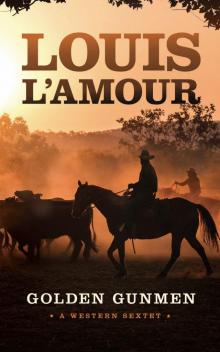 Golden Gunmen
Golden Gunmen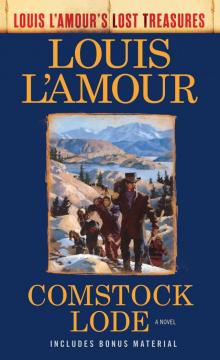 Comstock Lode
Comstock Lode The Lonesome Gods (Louis L'Amour's Lost Treasures)
The Lonesome Gods (Louis L'Amour's Lost Treasures) No Traveller Returns (Lost Treasures)
No Traveller Returns (Lost Treasures) Yondering: Stories
Yondering: Stories The Strong Land
The Strong Land Reilly's Luck (Louis L'Amour's Lost Treasures)
Reilly's Luck (Louis L'Amour's Lost Treasures) The Man Called Noon (Louis L'Amour's Lost Treasures)
The Man Called Noon (Louis L'Amour's Lost Treasures) Draw Straight
Draw Straight Last of the Breed (Louis L'Amour's Lost Treasures)
Last of the Breed (Louis L'Amour's Lost Treasures) Taggart (Louis L'Amour's Lost Treasures)
Taggart (Louis L'Amour's Lost Treasures) The Hopalong Cassidy Novels 4-Book Bundle
The Hopalong Cassidy Novels 4-Book Bundle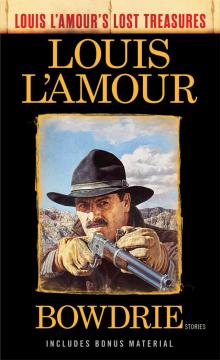 Bowdrie_Louis L'Amour's Lost Treasures
Bowdrie_Louis L'Amour's Lost Treasures Reilly's Luck
Reilly's Luck The Ferguson Rifle (Louis L'Amour's Lost Treasures)
The Ferguson Rifle (Louis L'Amour's Lost Treasures) Sacketts 00 - The Sackett Companion (v5.0)
Sacketts 00 - The Sackett Companion (v5.0) The Chick Bowdrie Short Stories Bundle
The Chick Bowdrie Short Stories Bundle Novel 1974 - The Californios (v5.0)
Novel 1974 - The Californios (v5.0)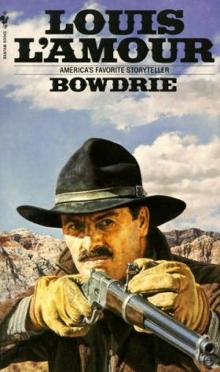 Collection 1983 - Bowdrie (v5.0)
Collection 1983 - Bowdrie (v5.0) Novel 1984 - The Walking Drum (v5.0)
Novel 1984 - The Walking Drum (v5.0) Over on the Dry Side
Over on the Dry Side The Walking Drum
The Walking Drum Novel 1963 - Catlow (v5.0)
Novel 1963 - Catlow (v5.0)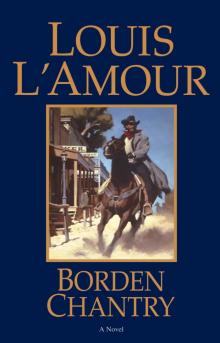 Borden Chantry
Borden Chantry Collection 1983 - Law Of The Desert Born (v5.0)
Collection 1983 - Law Of The Desert Born (v5.0) Ghost Towns
Ghost Towns Jubal Sackett (1985) s-4
Jubal Sackett (1985) s-4 Novel 1953 - Showdown At Yellow Butte
Novel 1953 - Showdown At Yellow Butte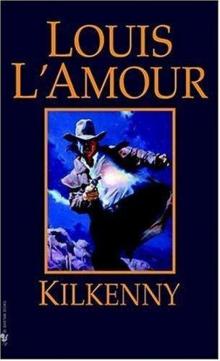 Kilkenny 03 - Kilkenny (v5.0)
Kilkenny 03 - Kilkenny (v5.0)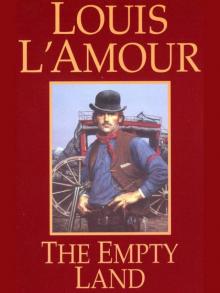 Novel 1969 - The Empty Land (v5.0)
Novel 1969 - The Empty Land (v5.0) Matagorda
Matagorda The First Fast Draw
The First Fast Draw Novel 1950 - Westward The Tide (v5.0)
Novel 1950 - Westward The Tide (v5.0) Ride the Dark Trail s-18
Ride the Dark Trail s-18 Novel 1963 - Fallon (v5.0)
Novel 1963 - Fallon (v5.0) Novel 1964 - Kiowa Trail (v5.0)
Novel 1964 - Kiowa Trail (v5.0) Kilkenny
Kilkenny Riders of the Dawn
Riders of the Dawn Sackett (1961) s-9
Sackett (1961) s-9 Fallon
Fallon Ride the River (1983) s-5
Ride the River (1983) s-5 Mojave Crossing s-11
Mojave Crossing s-11 Novel 1958 - Radigan (v5.0)
Novel 1958 - Radigan (v5.0) The Collected Short Stories of Louis L'Amour, Volume Five
The Collected Short Stories of Louis L'Amour, Volume Five Novel 1953 - Showdown At Yellow Butte (v5.0)
Novel 1953 - Showdown At Yellow Butte (v5.0) Collection 1980 - Yondering
Collection 1980 - Yondering Novel 1957 - Last Stand At Papago Wells (v5.0)
Novel 1957 - Last Stand At Papago Wells (v5.0) North To The Rails
North To The Rails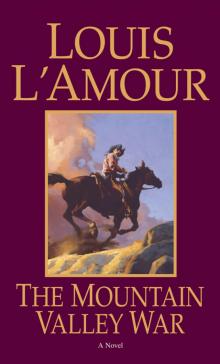 The Kilkenny Series Bundle
The Kilkenny Series Bundle Novel 1972 - Callaghen (v5.0)
Novel 1972 - Callaghen (v5.0) Novel 1970 - Reilly's Luck (v5.0)
Novel 1970 - Reilly's Luck (v5.0)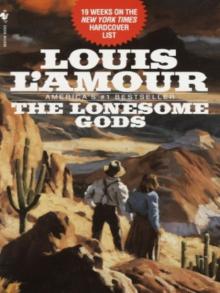 The Lonesome Gods
The Lonesome Gods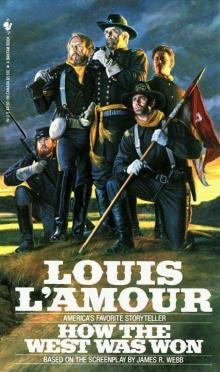 Novel 1963 - How The West Was Won (v5.0)
Novel 1963 - How The West Was Won (v5.0) Collection 2001 - May There Be A Road (v5.0)
Collection 2001 - May There Be A Road (v5.0) Flint
Flint Novel 1968 - Chancy (v5.0)
Novel 1968 - Chancy (v5.0) Volume 1: Unfinished Manuscripts, Mysterious Stories, and Lost Notes from One of the World's Most Popular Novelists
Volume 1: Unfinished Manuscripts, Mysterious Stories, and Lost Notes from One of the World's Most Popular Novelists Novel 1962 - High Lonesome (v5.0)
Novel 1962 - High Lonesome (v5.0) Fair Blows the Wind (Louis L'Amour's Lost Treasures)
Fair Blows the Wind (Louis L'Amour's Lost Treasures) Lando s-8
Lando s-8 The High Graders
The High Graders Collection 1986 - Night Over The Solomons (v5.0)
Collection 1986 - Night Over The Solomons (v5.0) The Collected Short Stories of Louis L'Amour, Volume 3
The Collected Short Stories of Louis L'Amour, Volume 3 Collection 1980 - Yondering (v5.0)
Collection 1980 - Yondering (v5.0) Showdown
Showdown The Quick And The Dead
The Quick And The Dead Novel 1968 - Down The Long Hills (v5.0)
Novel 1968 - Down The Long Hills (v5.0) The Lonely Men s-14
The Lonely Men s-14 Bowdrie (Louis L'Amour's Lost Treasures)
Bowdrie (Louis L'Amour's Lost Treasures) Treasure Mountain s-17
Treasure Mountain s-17 Novel 1959 - Taggart (V5.0)
Novel 1959 - Taggart (V5.0)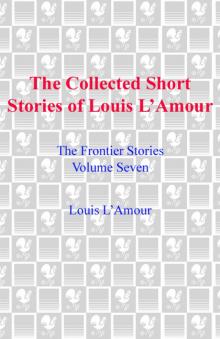 The Collected Short Stories of Louis L'Amour, Volume 7
The Collected Short Stories of Louis L'Amour, Volume 7 Novel 1957 - The Tall Stranger (v5.0)
Novel 1957 - The Tall Stranger (v5.0) Novel 1978 - The Proving Trail (v5.0)
Novel 1978 - The Proving Trail (v5.0) Callaghen (Louis L'Amour's Lost Treasures)
Callaghen (Louis L'Amour's Lost Treasures) Sitka
Sitka Collection 1988 - Lonigan (v5.0)
Collection 1988 - Lonigan (v5.0) The Californios
The Californios Novel 1966 - The Broken Gun (v5.0)
Novel 1966 - The Broken Gun (v5.0)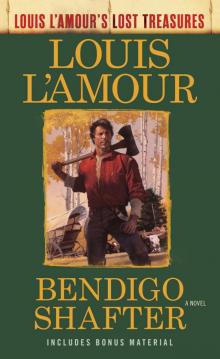 Bendigo Shafter (Louis L'Amour's Lost Treasures)
Bendigo Shafter (Louis L'Amour's Lost Treasures) Novel 1979 - The Iron Marshall (v5.0)
Novel 1979 - The Iron Marshall (v5.0)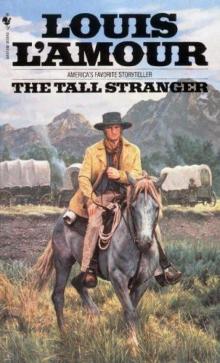 Novel 1957 - The Tall Stranger
Novel 1957 - The Tall Stranger Novel 1965 - The Key-Lock Man (v5.0)
Novel 1965 - The Key-Lock Man (v5.0) Collection 1986 - Dutchman's Flat (v5.0)
Collection 1986 - Dutchman's Flat (v5.0) Lonely On the Mountain s-19
Lonely On the Mountain s-19 Sackett's Land
Sackett's Land The Man Called Noon
The Man Called Noon Hondo (Louis L'Amour's Lost Treasures)
Hondo (Louis L'Amour's Lost Treasures) The Lawless West
The Lawless West The Warrior's Path (1980) s-3
The Warrior's Path (1980) s-3 Novel 1956 - Silver Canyon (v5.0)
Novel 1956 - Silver Canyon (v5.0) The Sky-Liners (1967) s-13
The Sky-Liners (1967) s-13 Mustang Man s-15
Mustang Man s-15 Novel 1971 - Tucker (v5.0)
Novel 1971 - Tucker (v5.0) Off the Mangrove Coast (Louis L'Amour's Lost Treasures)
Off the Mangrove Coast (Louis L'Amour's Lost Treasures) Collection 2005 - Riding For The Brand (v5.0)
Collection 2005 - Riding For The Brand (v5.0) Collection 1986 - The Trail To Crazy Man (v5.0)
Collection 1986 - The Trail To Crazy Man (v5.0) Silver Canyon
Silver Canyon The Man from Battle Flat
The Man from Battle Flat The Daybreakers (1960) s-6
The Daybreakers (1960) s-6 Kid Rodelo (Louis L'Amour's Lost Treasures)
Kid Rodelo (Louis L'Amour's Lost Treasures) Milo Talon
Milo Talon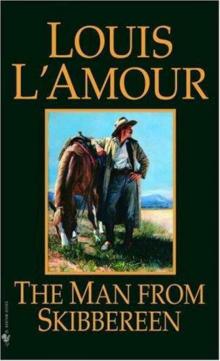 Novel 1973 - The Man From Skibbereen (v5.0)
Novel 1973 - The Man From Skibbereen (v5.0) Novel 1965 - The High Graders (v5.0)
Novel 1965 - The High Graders (v5.0) The Sacket Brand (1965) s-12
The Sacket Brand (1965) s-12 Rivers West
Rivers West Novel 1970 - The Man Called Noon (v5.0)
Novel 1970 - The Man Called Noon (v5.0) Education of a Wandering Man
Education of a Wandering Man The Collected Short Stories of Louis L'Amour, Volume 1
The Collected Short Stories of Louis L'Amour, Volume 1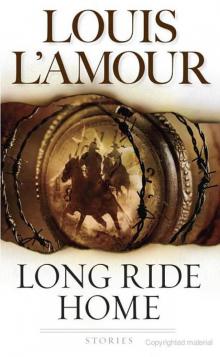 Collection 1989 - Long Ride Home (v5.0)
Collection 1989 - Long Ride Home (v5.0) Callaghen
Callaghen Collection 1999 - Beyond The Great Snow Mountains (v5.0)
Collection 1999 - Beyond The Great Snow Mountains (v5.0) West of the Tularosa
West of the Tularosa End Of the Drive (1997) s-7
End Of the Drive (1997) s-7 Novel 1986 - Last Of The Breed (v5.0)
Novel 1986 - Last Of The Breed (v5.0)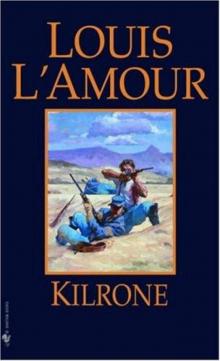 Novel 1966 - Kilrone (v5.0)
Novel 1966 - Kilrone (v5.0) Chancy
Chancy Desert Death-Song
Desert Death-Song Novel 1959 - The First Fast Draw (v5.0)
Novel 1959 - The First Fast Draw (v5.0) Kilkenny 02 - A Man Called Trent (v5.0)
Kilkenny 02 - A Man Called Trent (v5.0) Lost Trails
Lost Trails Novel 1972 - Callaghen
Novel 1972 - Callaghen Novel 1966 - Kid Rodelo (v5.0)
Novel 1966 - Kid Rodelo (v5.0) The Collected Short Stories of Louis L'Amour, Volume 2
The Collected Short Stories of Louis L'Amour, Volume 2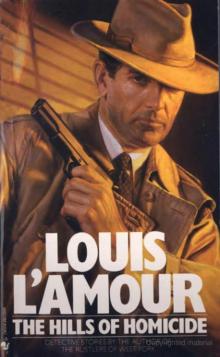 Collection 1983 - The Hills Of Homicide (v5.0)
Collection 1983 - The Hills Of Homicide (v5.0) Novel 1969 - Conagher (v5.0)
Novel 1969 - Conagher (v5.0) Radigan
Radigan High Lonesome
High Lonesome Bendigo Shafter
Bendigo Shafter Novel 1954 - Utah Blaine (As Jim Mayo) (v5.0)
Novel 1954 - Utah Blaine (As Jim Mayo) (v5.0) Collection 1990 - Grub Line Rider (v5.0)
Collection 1990 - Grub Line Rider (v5.0)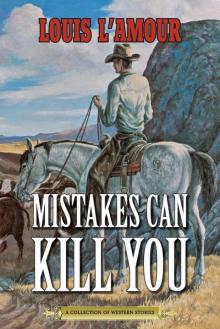 Mistakes Can Kill You
Mistakes Can Kill You The Iron Marshall
The Iron Marshall Novel 1963 - Dark Canyon (v5.0)
Novel 1963 - Dark Canyon (v5.0) Novel 1955 - Heller With A Gun (v5.0)
Novel 1955 - Heller With A Gun (v5.0) Novel 1978 - Bendigo Shafter (v5.0)
Novel 1978 - Bendigo Shafter (v5.0)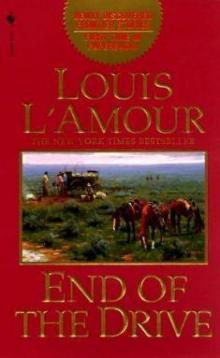 Collection 1997 - End Of The Drive (v5.0)
Collection 1997 - End Of The Drive (v5.0) Fair Blows the Wind
Fair Blows the Wind Talon & Chantry 07 - North To The Rails (v5.0)
Talon & Chantry 07 - North To The Rails (v5.0) The Trail to Crazy Man
The Trail to Crazy Man To the Far Blue Mountains (1976) s-2
To the Far Blue Mountains (1976) s-2 Collection 1981 - Buckskin Run (v5.0)
Collection 1981 - Buckskin Run (v5.0) Collection 2008 - Big Medicine (v5.0)
Collection 2008 - Big Medicine (v5.0) Collection 2003 - From The Listening Hills (v5.0)
Collection 2003 - From The Listening Hills (v5.0)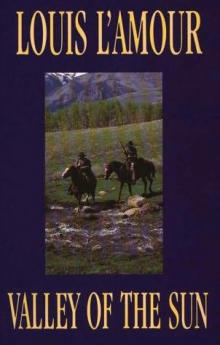 Collection 1995 - Valley Of The Sun (v5.0)
Collection 1995 - Valley Of The Sun (v5.0) Glory Riders
Glory Riders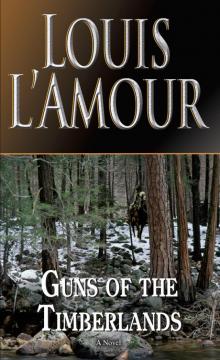 Guns of the Timberlands
Guns of the Timberlands The Collected Short Stories of Louis L'Amour, Volume Four
The Collected Short Stories of Louis L'Amour, Volume Four Novel 1968 - Brionne (v5.0)
Novel 1968 - Brionne (v5.0)